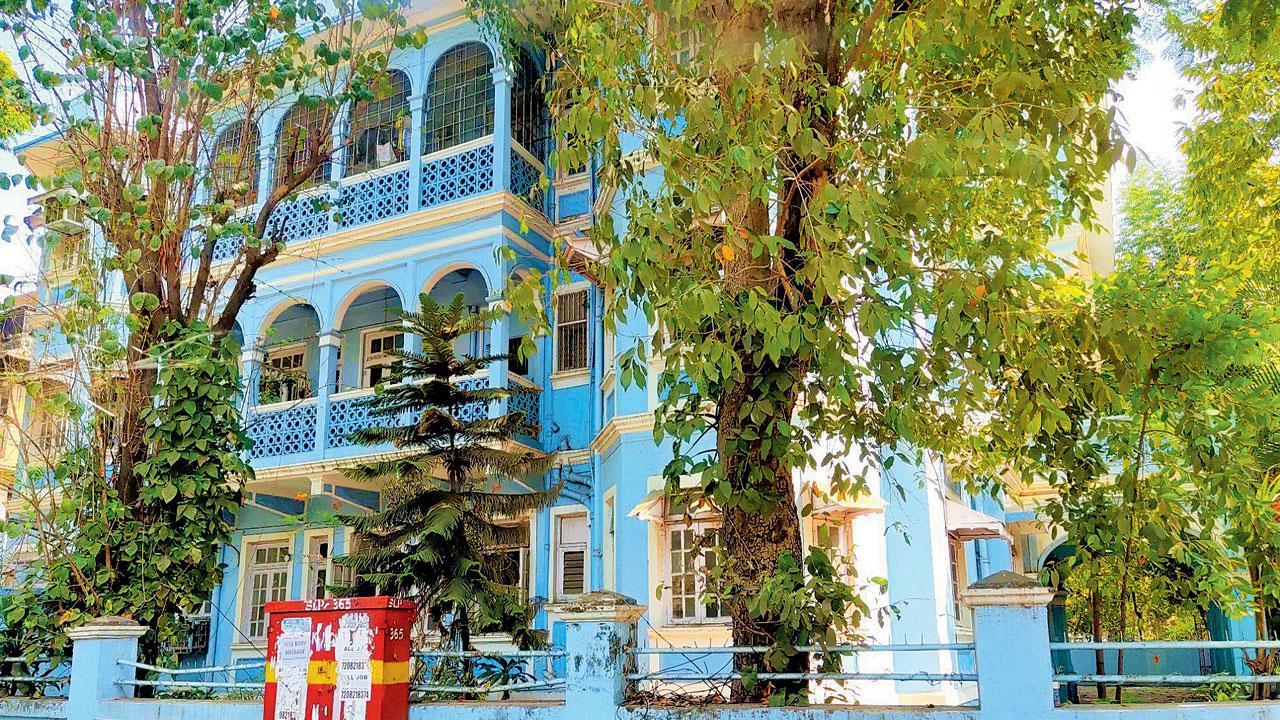We don’t seem to value the immense worth of the urban local heritage around us, in our tearing hurry to develop and move with the times

A residential building near Ruia College that represents the area's unique urban heritage.
Back when we were in college, securing secondhand textbooks and reference guides was viewed as a master task, a highly skilled one. It boiled down to the knowledge of having access to the go-to bookseller, and managing a sweet VFM deal that still left you with some pocket money to sail through the rest of the month. Of course, if you, like this columnist, frequently succumbed to the aromas wafting from the many Udipis that surrounded our college [Ruia], that was hardly ever possible.
At that time, Matunga thrived on student demand-and-supply of all kinds, be it the fancy stationery and fashion outlets, cheap eating addas, Udipi and Irani cafes, and book vendors who catered to students and collectors. With academic books, there were a few prized haunts that became integral to our study patterns. Come exam time and there would be a mad scurry to these last resorts of hope, to help salvage our academic reputations.
ADVERTISEMENT
Recently, as I stepped into college after ages, I took a route that passed by some of these one-time key landmarks from my student life. And to my shock, they were all gone, barring one bookseller who was holding fort opposite the railway station. A major chunk of them operated from a single enclosure that was home to a cluster of three-four buildings that had to be accessed from a small entrance behind the kabutarkhana on Bhandarkar Road. Now that I recall, the imagery was every bit Potteresque – as we collegians found our way through a dingy opening into a world that offered us the answers to well, some of our questions.
I felt a lump in my throat. I wanted to scour more of the road to check out the extent of how much more local heritage had been eroded. A few more reminders from that time had also vanished – a tiny corner shop that sold all kinds of crisps and snacks, a South Indian condiments store and an Ayurveda centre. They were all gone. Where did they move to earn their livelihood? Did this drive them to poverty? So many questions crowded the mind, and pained the heart. In its place was a high barricade that announced a glitzy new residential complex. A little ahead, I spotted two familiar landmarks – the quaint post office and the flower market. Phew. Thankfully, both felt like refreshing sepia-tinted reminders of the glory days. My joy was short-lived. In the foreground, and almost towering over all else on that road was another skyscraper whose banner screamed the best quality of life for its owners.
I really wonder what must’ve been going through the minds of some of the older flower shop owners and vendors on that stretch, as they watched the gradual gentrification of their beloved Matunga. The transformation had spread to other parts, too. New buildings had sprung up in the charming Hindu Colony while umpteen new skyrises now lined both sides of Dr Ambedkar Road, replacing picturesque Art Deco inspired buildings and their green balconies and long verandahs that were always the envy of my eye back then. As an impressionable student, I never imagined that a day would come where I would be writing a eulogy about its heritage worth.
I was briefly reminded of a visit to a souvenir shop on a station halt while on a train ride on the Isle of Man Steam Railway. The narrow gauge rail journey wormed its way along the beautiful countryside. Passengers were encouraged to pick their own piece of heritage from the route, and the memorabilia from this historic route was a way of treasuring that legacy, the rail tour guide told us. There were tonnes of collectibles – from calendars of the UK’s vintage railway routes to miniature replicas of steam locomotives. For a heritage nut, it was Disneyland. But there was a lesson, too. That while the whole rail system in the UK had moved forward, they made room to salute their rich legacy. And this approach translated across every cornerstone and plaque that I came across on that trip to London – celebrate the past while embracing the future.
Those secondhand booksellers did not bail out on us, but we could never return the favour, because we let their legacy fade away. Today’s gadget-enslaved students are clueless of their existence. Likewise with those buildings that silently passed on. Such erosion of elements of local urban heritage – tangible or intangible – is common, across our neighbourhoods, roads, name plates, pavements and bridges. Brick by brick, it is being chipped away. All we are left with are concrete aberrations that remind us of a society that seems caught in the mad race of development and progress.
mid-day’s Features Editor Fiona Fernandez relishes the city’s sights, sounds, smells and stones...wherever the ink and the inclination takes her. She tweets @bombayana
Send your feedback to mailbag@mid-day.com
 Subscribe today by clicking the link and stay updated with the latest news!" Click here!
Subscribe today by clicking the link and stay updated with the latest news!" Click here!







